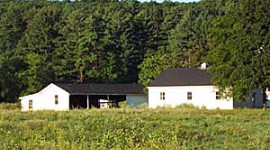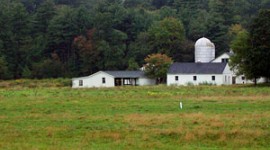Working Landscapes: Whitney Farm
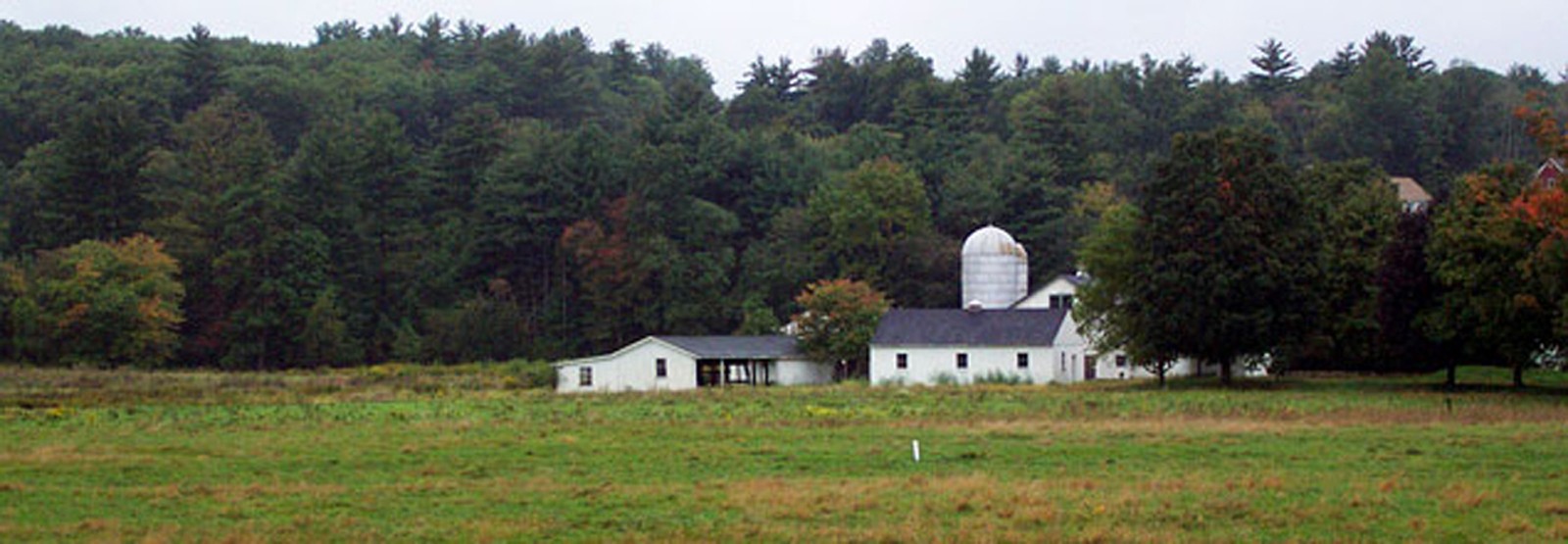
The Whitney Farm in the town of Sherborn, Massachusetts, is a 35-acre agricultural landscape with buildings constructed in the early 20th century. The complex, consisting of a house, two large barns, outbuildings and a silo, is located on a flat piece of land on the western edge of town and, until recently, was planted with corn.
A recent historic assets report concluded that the landscape and farm buildings were judged individually eligible as a landscape for the National Register of Historic Places under Criteria A and C at the local level. The buildings, belonging to the Whitney family who were early settlers in Sherborn, retain the significant architectural features of their 19th century design, and contribute to the historical character of the farm landscape. The construction was a result of a 19th century trend in the settlement of large farmsteads; its continual use into the 20th century has preserved the integrity of design, materials and workmanship of the buildings and landscape, along with an uninterrupted view-shed from Whitney Street to the west.
History
Members of the Whitney family first occupied this part of Shelborn in the mid 1700s. The first Whitney to own the land was James Whitney, a great-great-grandson of Jonathan Whitney, a town founder who settled Sherborn in 1679. In the mid-1800s, Isaac Whitney operated two quarries east and west of the farm.
By the mid-19th century, Sherborn was a small farming town dotted with dairy farms and apple orchards. Local cottage industries included cider-making, smithing guns, blacksmithing, making willow furniture, milling lumber, and making cloth and leather goods.
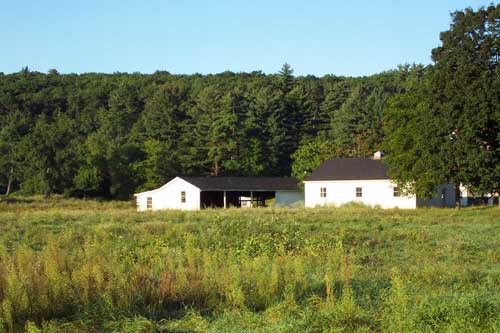 |
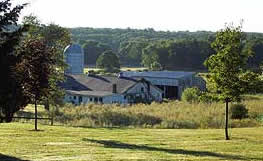 |
An 1856 map of Middlesex County showed that the Whitney Farm had been passed along to brothers Warren and James R. Whitney. By 1880, they also owned the house, two barns (one of which is most likely the current existing barn), three storehouses, and a secondary 'railroad' dwelling. They had six cows, two horses and six swine. Possibly they grew corn and other crops and continued the family quarry business. Relatives of the Whitney family built additional clusters of homes and farms, so that during this period of Sherborn history, much of the town was related by birth or marriage.
There were several railroad stops in town, one of them on the Whitney farm. The Milford Branch Railroad, built between Milford and Framingham in 1845 to connect Milford 's thriving shoe factories with the Boston and Worcester Railroad, passed across the property east of the Whitney farmhouse.
In 1889, Frank Whitney inherited the property from his father, James R, expanded the dairy herd and added three new hen houses. His flock soon doubled, reflecting an interest in poultry farming that was common at the time.
A fire destroyed the original 18th century homestead in 1910, and the house was rebuilt in Victorian Eclectic style. Additional Whitney homes were destroyed by fire early in the 20th century.
An archival photo from 1907 indicates that the Whitney Farm buildings and surrounding landscape has retained its mid-19th century historic appearance. The Whitney Farm has stayed intact, primarily because it was passed down through generations of a single family. The farm was sold in the mid-20th century, but it continued to be farmed, until its recent purchase by Rising Tide Development Company.
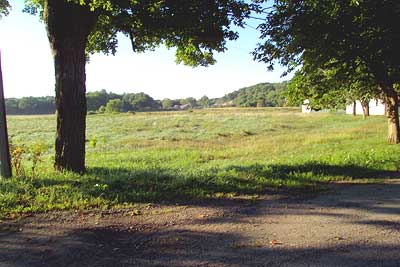
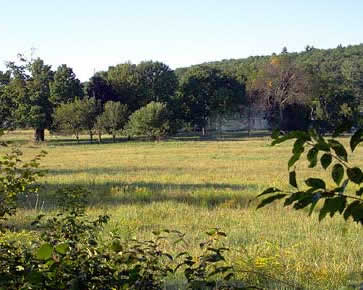
Threat
The Rising Tide Development Company has retained zoning to build a densely populated housing development on the site of the Whitney Farm. The historic buildings will be demolished, and farmland will be converted to housing sites. Town planners have challenged the density of the development, and Rising Tide has reduced the number of housing lots. The Rising Tide plans have been reviewed by Sherborn Zoning Board of Appeals and will be reviewed by the Sherborn Conservation Commission. Ultimately the town has little legal recourse to prevent this development.
How to Help
Abutters and the Sherborn Historic Commission have educated townspeople on the historic value of this farm property. The property was purchased for $2 million. Neither the community nor the town can afford to purchase the property for preservation. Please contact the Sherborn Historical Commission to see how you might be able to help. Any planning process for the site should follow the Secretary of the Interior's Guidelines for the Treatment of Cultural Landscapes.
Learn More
Carol McGarry
Chair, Sherborn Historical Commission
262 Western Avenue
Sherborn, MA 01770
tel. 508.653.4711
Carol@twohorses.com




